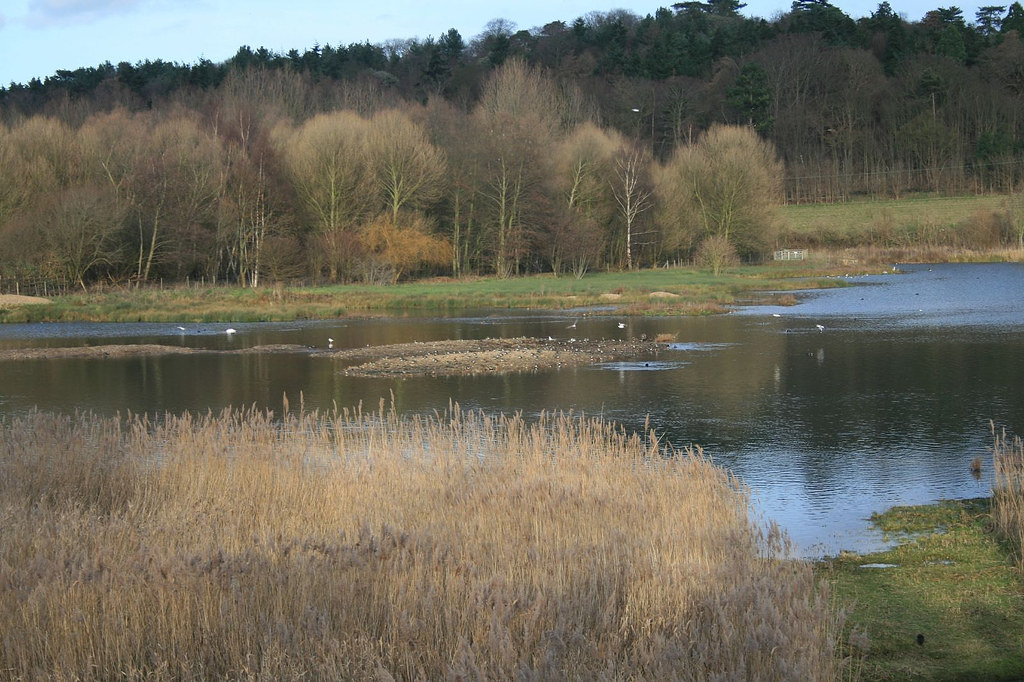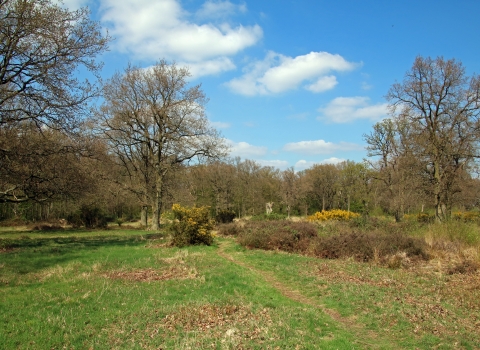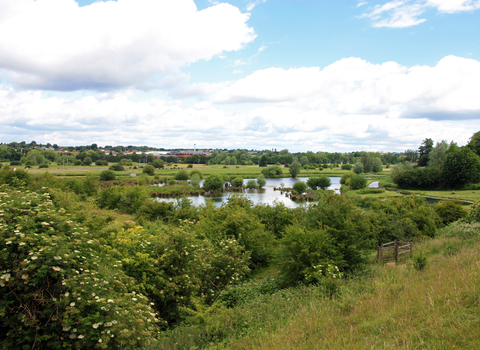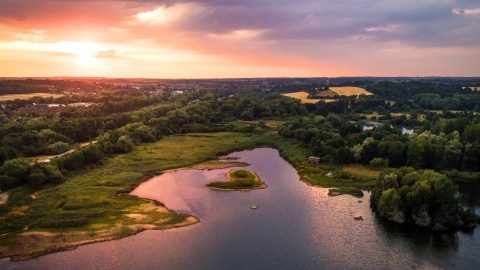
Amwell Nature Reserve (c) Steve Kenny
Know before you go
Dogs
Dogs (under control) are permitted along pathways around the reserve. Dogs are not permitted in the bird hides (James, White and Gladwin) or around Hollycross dragonfly trail.
When to visit
Opening times
Open at all timesBest time to visit
All year roundEnvironmental designation
About the reserve
Amwell Nature Reserve near Ware is one of the most important places for wildlife in the county and is well-used and enjoyed by the local community. It hosts a mosaic of habitats including reedbeds, grassland and woodland, although Great Hardmead Lake is arguably the most striking feature. The reserve forms part of the Lee Valley, which connects the site with other nature reserves and habitats along the River Lee, providing a wildlife corridor stretching from Hertford to the Thames, creating a Living Landscape.
Sit back, relax and pay a virtual visit to Amwell in the video below.
In summer, it is best known for its dragons – the reserve is home to 21 species of dragonfly and damselfly and has its very own Dragonfly Trail – but it really shines in the winter months when a large number of wintering birds call it home.
Visit the viewpoint overlooking Great Hardmead Lake and see what you can spot. The viewpoint is seldomly short of birdwatchers, most of whom will be happy to share their observations. Wintering gulls provide quite a spectacle as they come to roost on the lake in large numbers every evening, screeching, crying and cawing. These are mostly Black-headed and Lesser Black-backed Gulls with the occasional, more unusual, Caspian and Yellow-legged Gulls being spotted by visitors. Many come to Amwell to see not only Gadwall and Shovelers but also the Smew, a rare winter visitor.
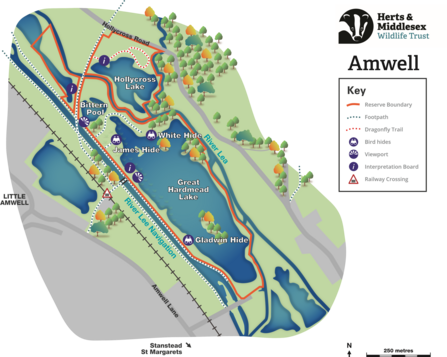
Follow the path northbound to the Bittern Pool Viewpoint. With some patience and a bit of luck, you’ll find one of our most elusive winter birds skulking in their favourite wet reedbed home: the Bittern. It is a thickset bird from the heron family, with a black and brown plumage providing perfectly camouflage between the reeds. A winter bird, the Bittern will often sneak across the ride in front of the James Hide. This two-storey hide overlooks a pool surrounded by reedbed. To view Rough Holme Island stop by the Gladwin Hide and spot ducks such as Widgeon, Gadwall, Shoveler and Goldeneye. The Dragonfly Trail is open all year but May to September gives you the best chance to view dragonflies close up, hunting over open water.
Here are a few impressions from people who have visited Amwell Nature Reserve:
If you have visited Amwell with your camera, we'd love to see your images!
Directions
Site entrance: The reserve can be accessed from Amwell Lane via a footpath (signposted) or from the River Lee Navigation towpath. The reserve can also be accessed from Hollycross Road.
Access by road: From St Margarets, just before the railway, turn left onto Amwell Lane. In 0.5 miles, look out for the entrance sign on the gate.
Access by public transport
Bus: 310, C4 – St Margaret’s rail station (0.75 miles).
Rail: St Margaret’s (0.75 miles)

